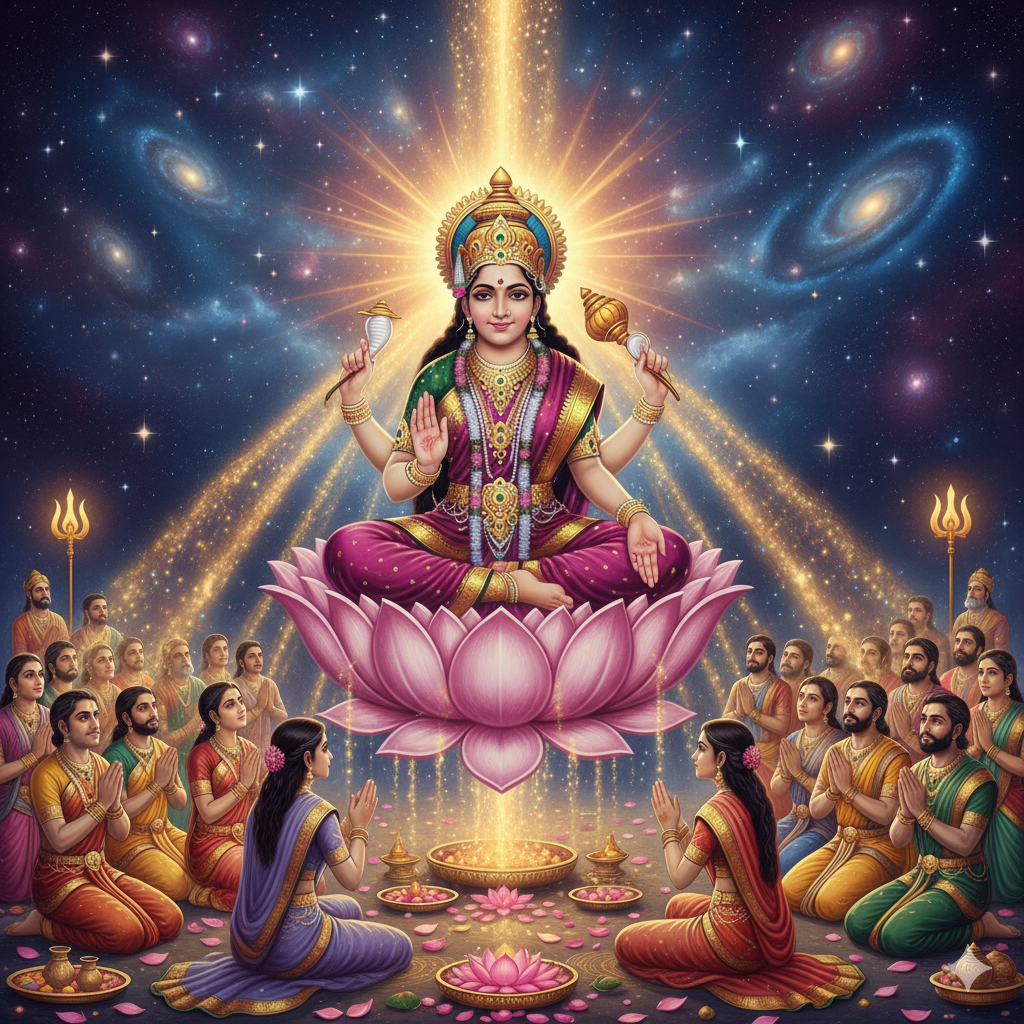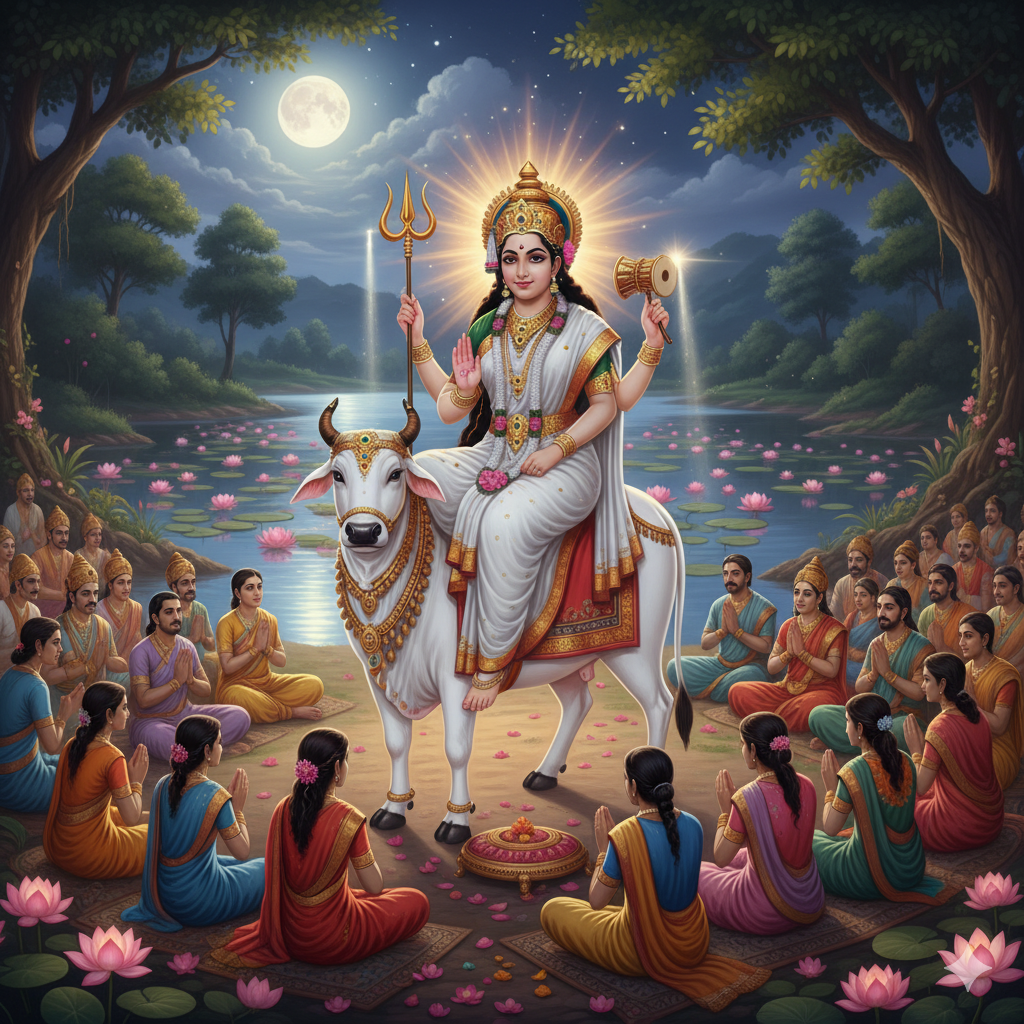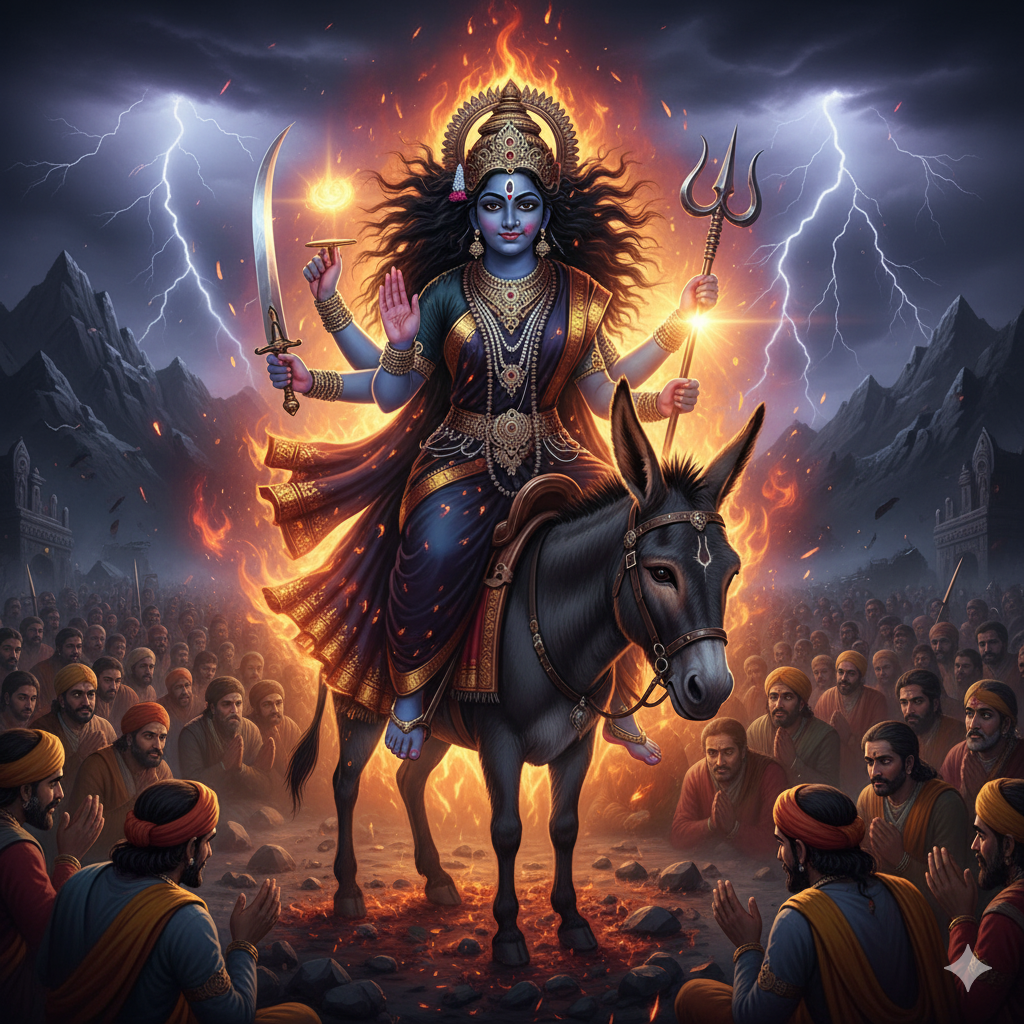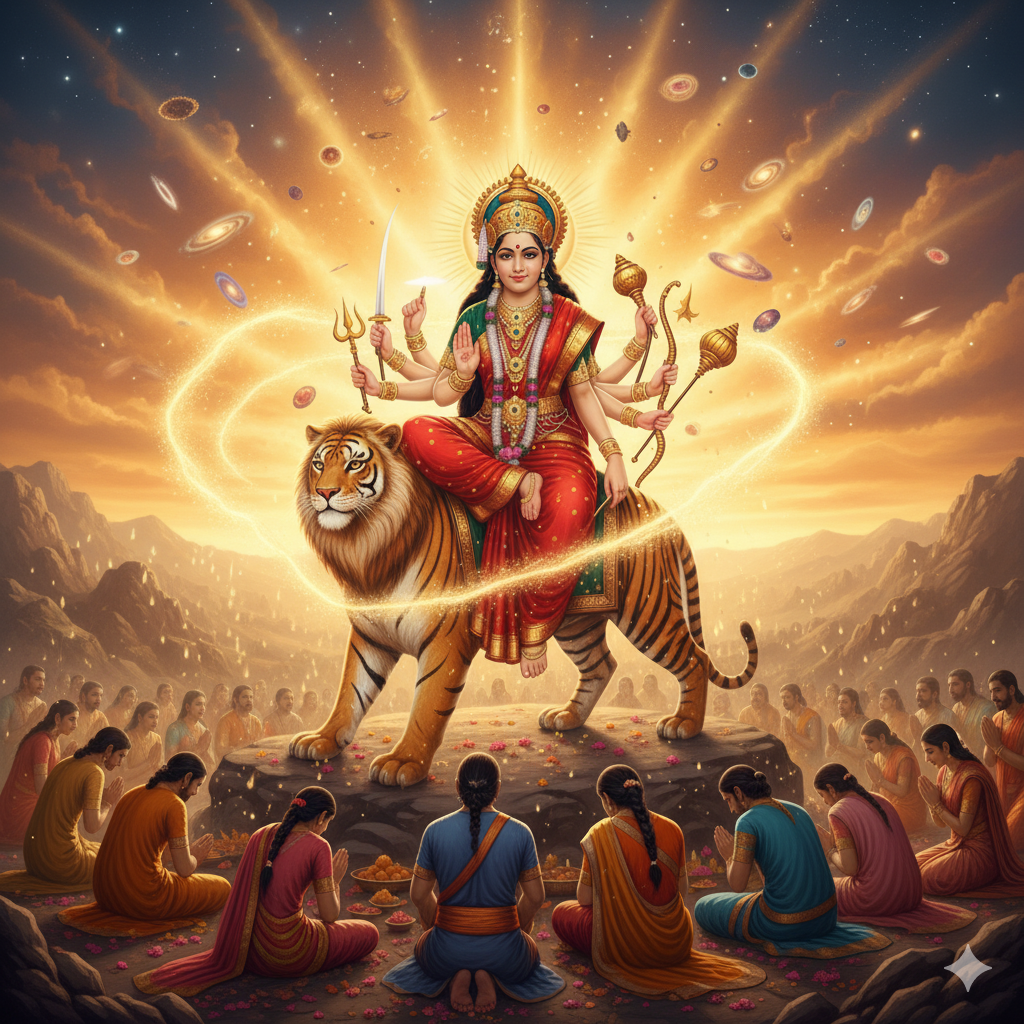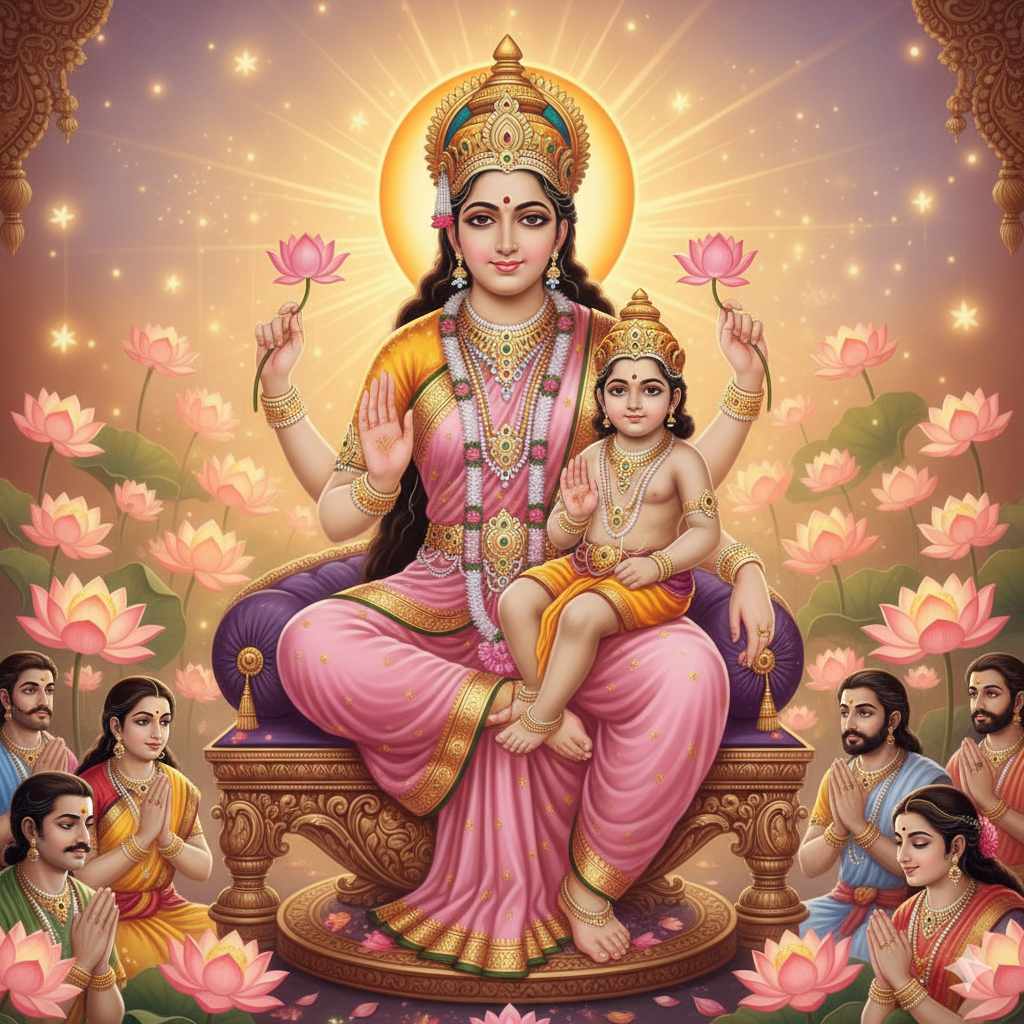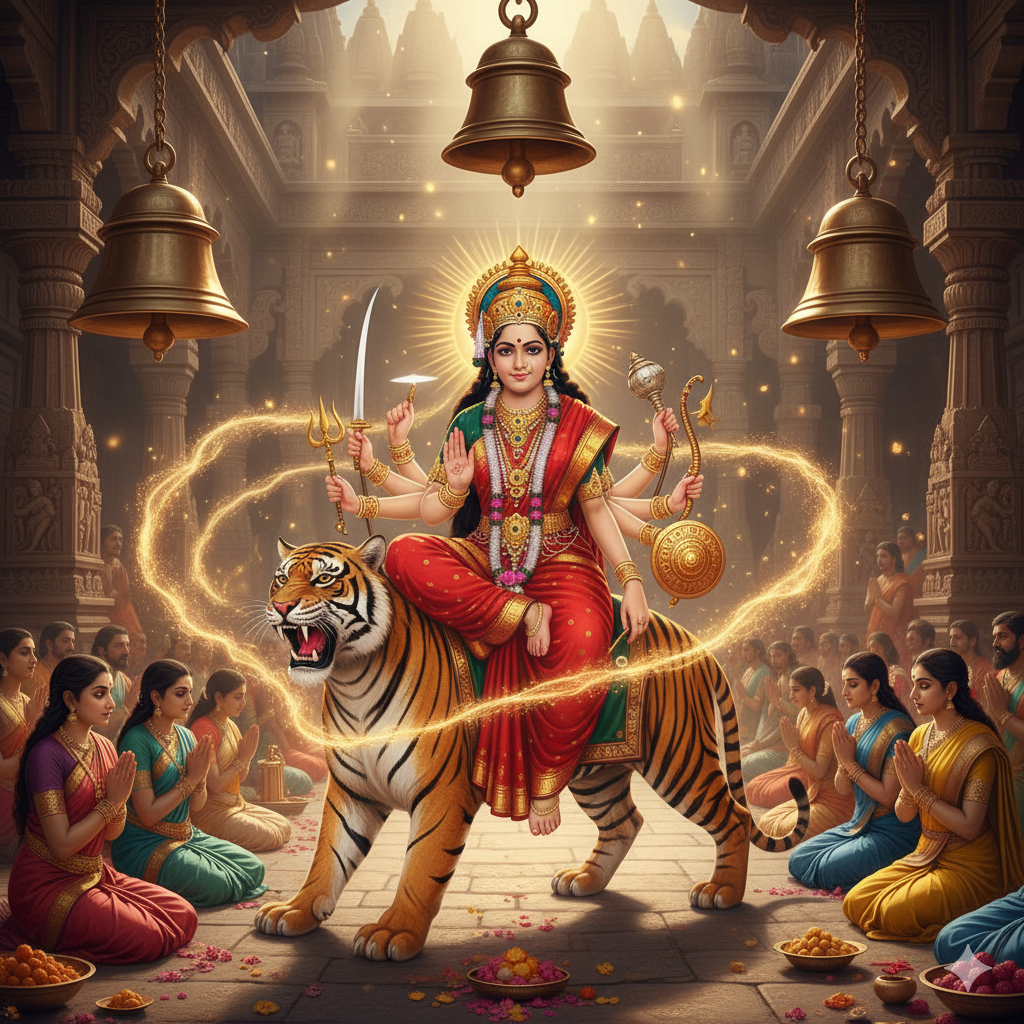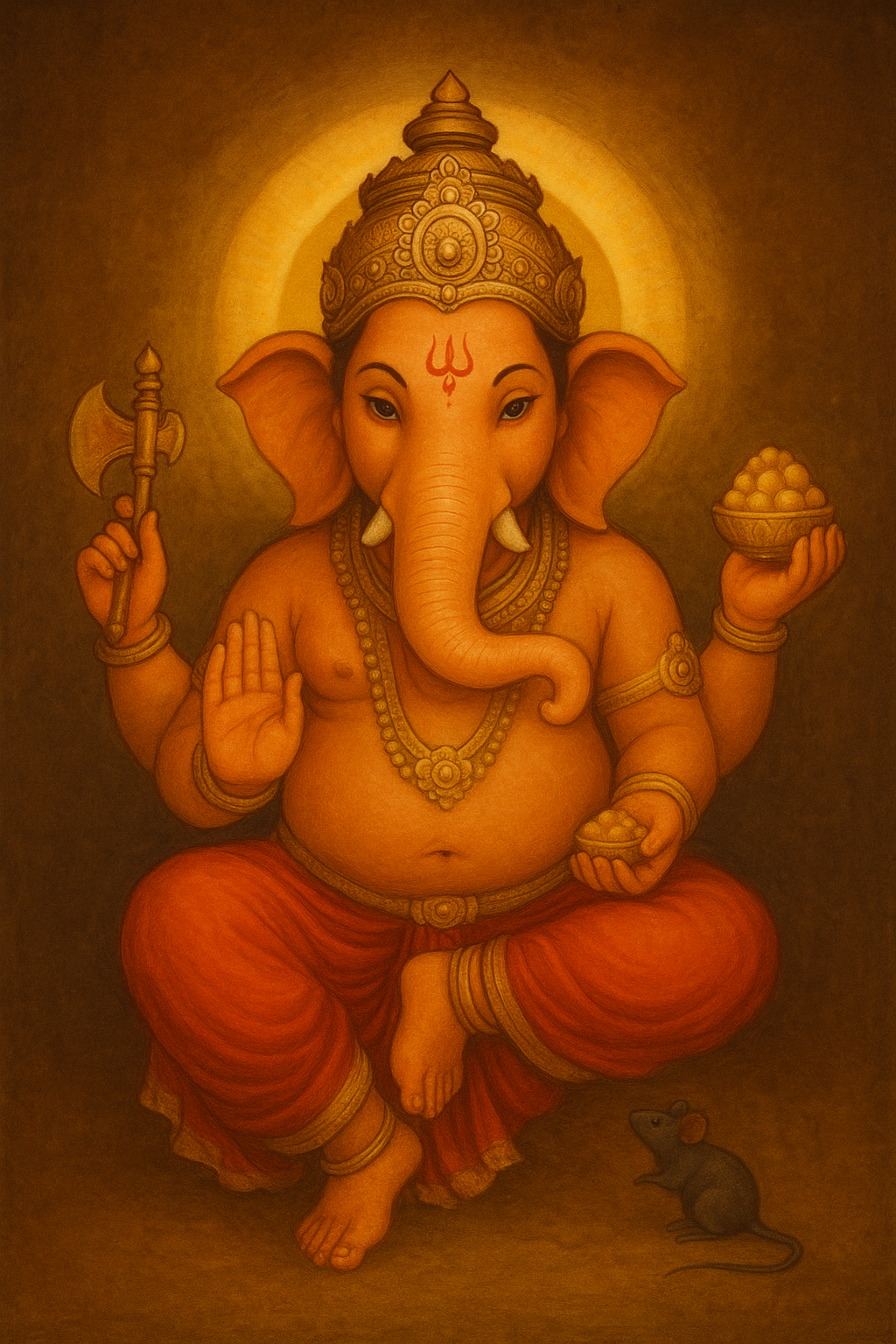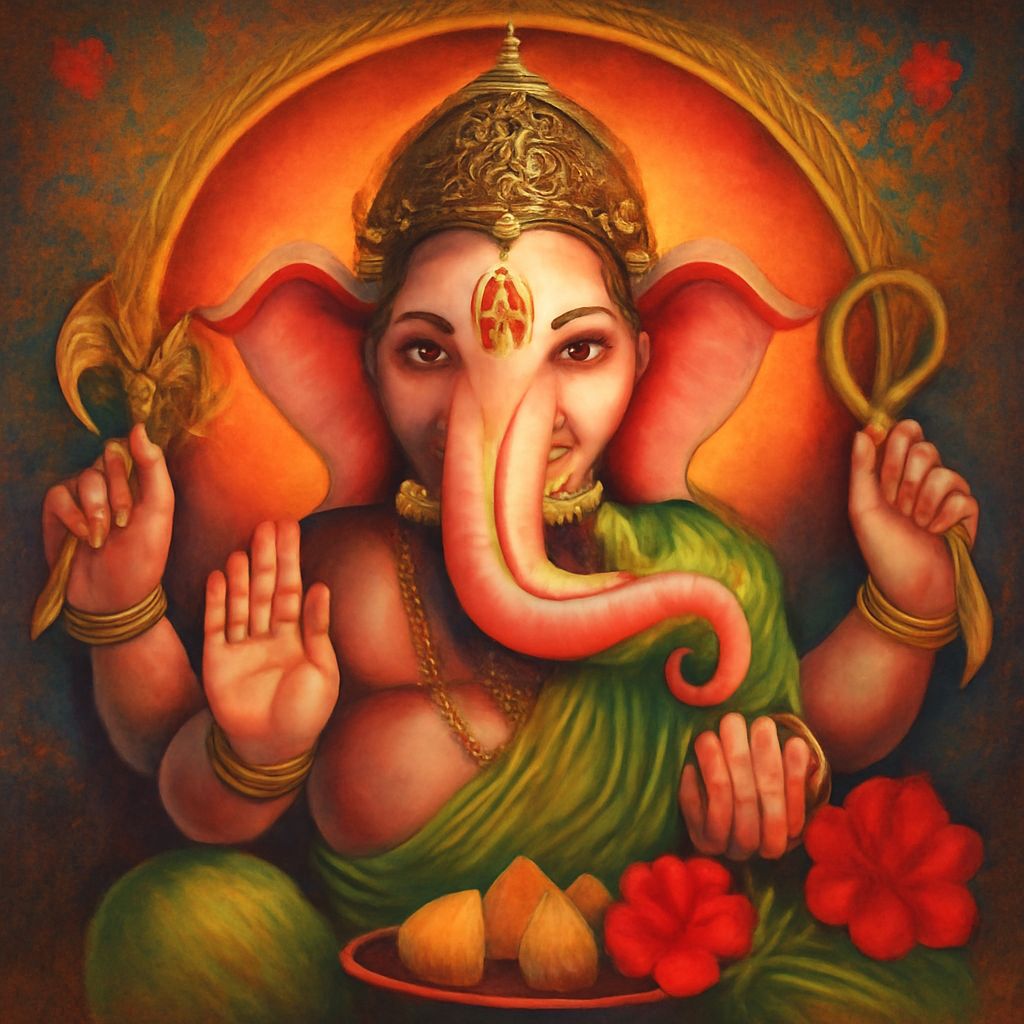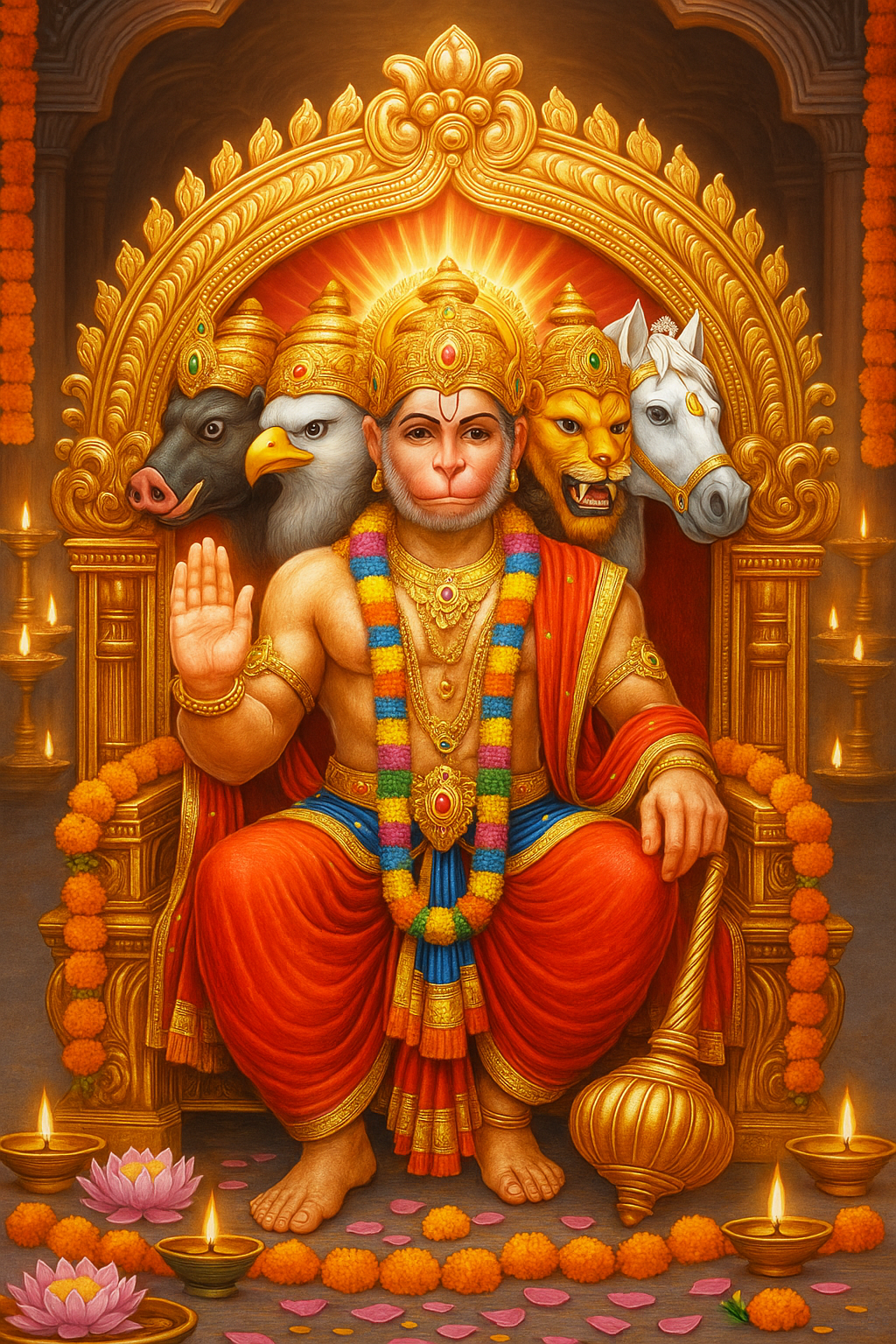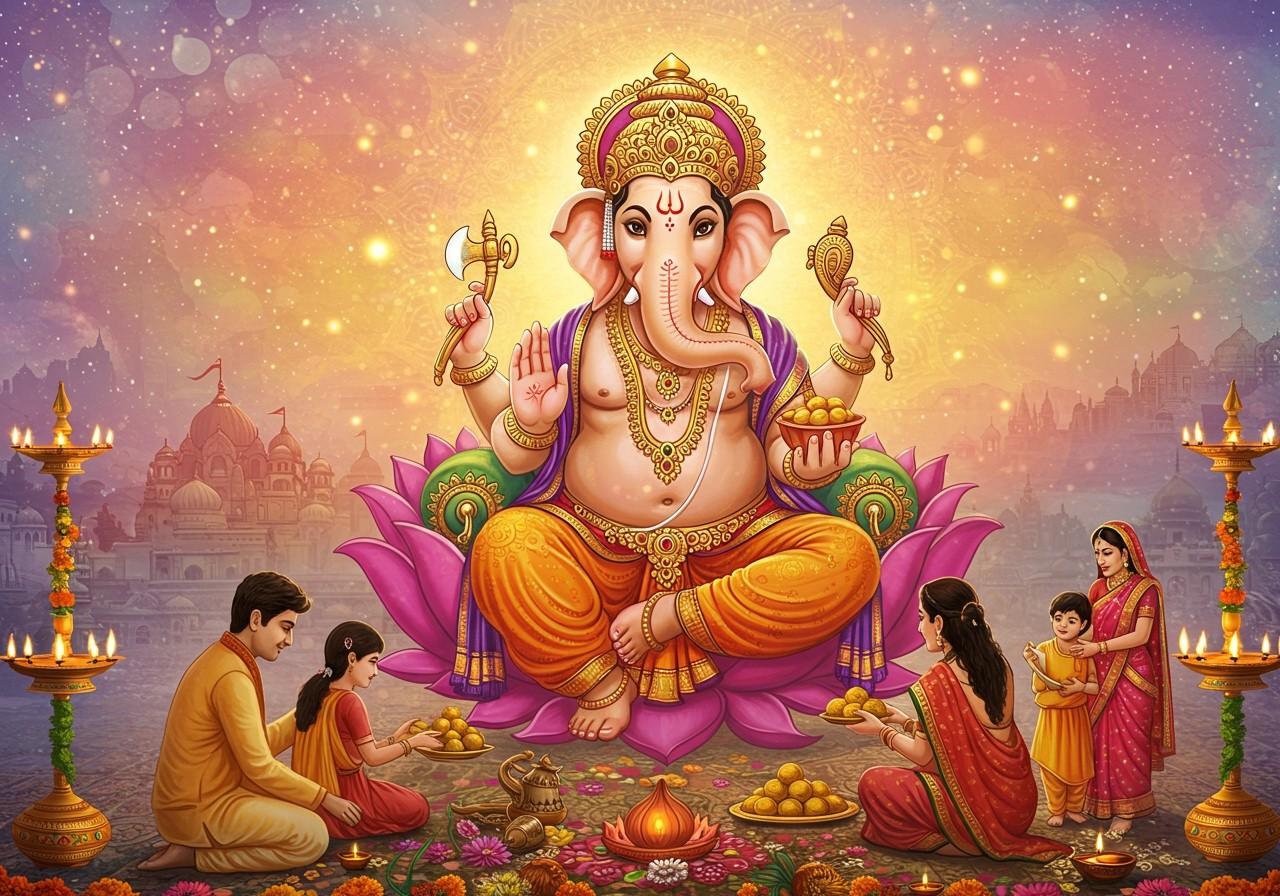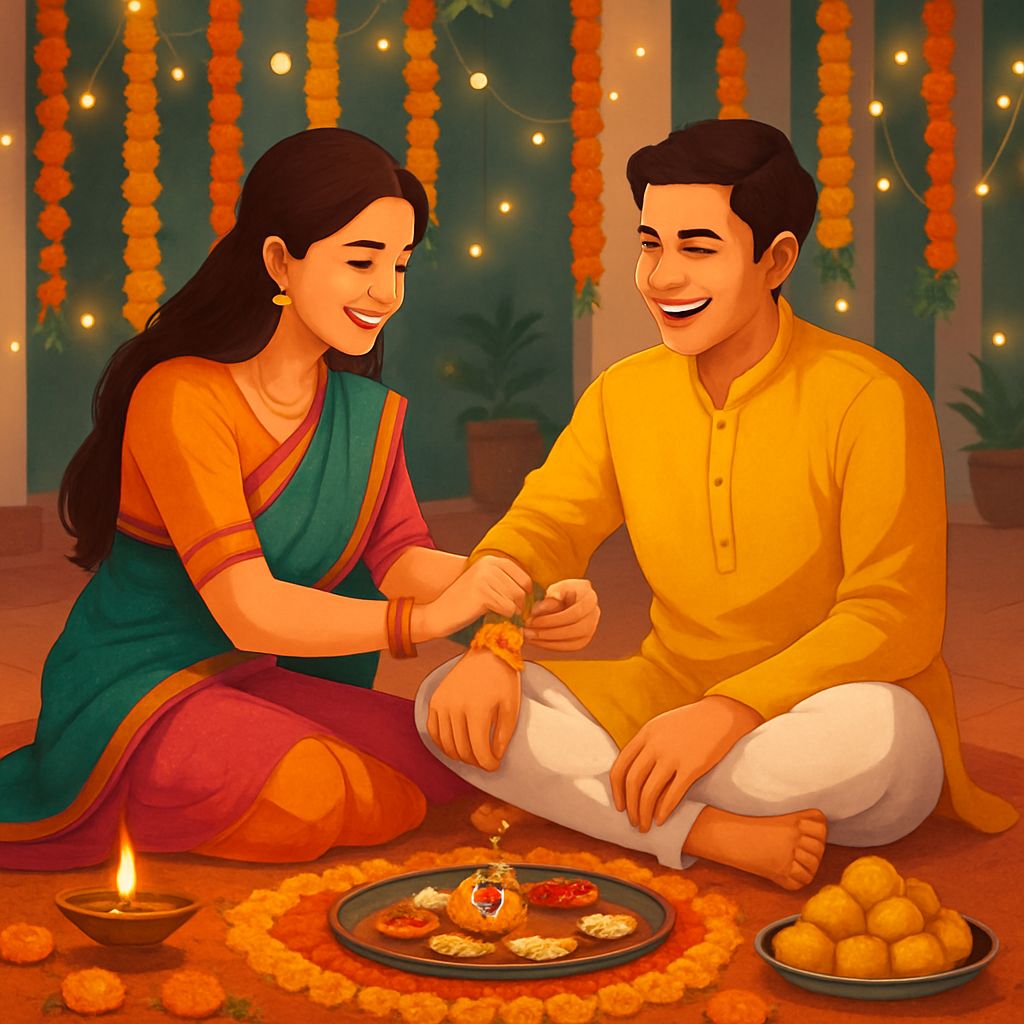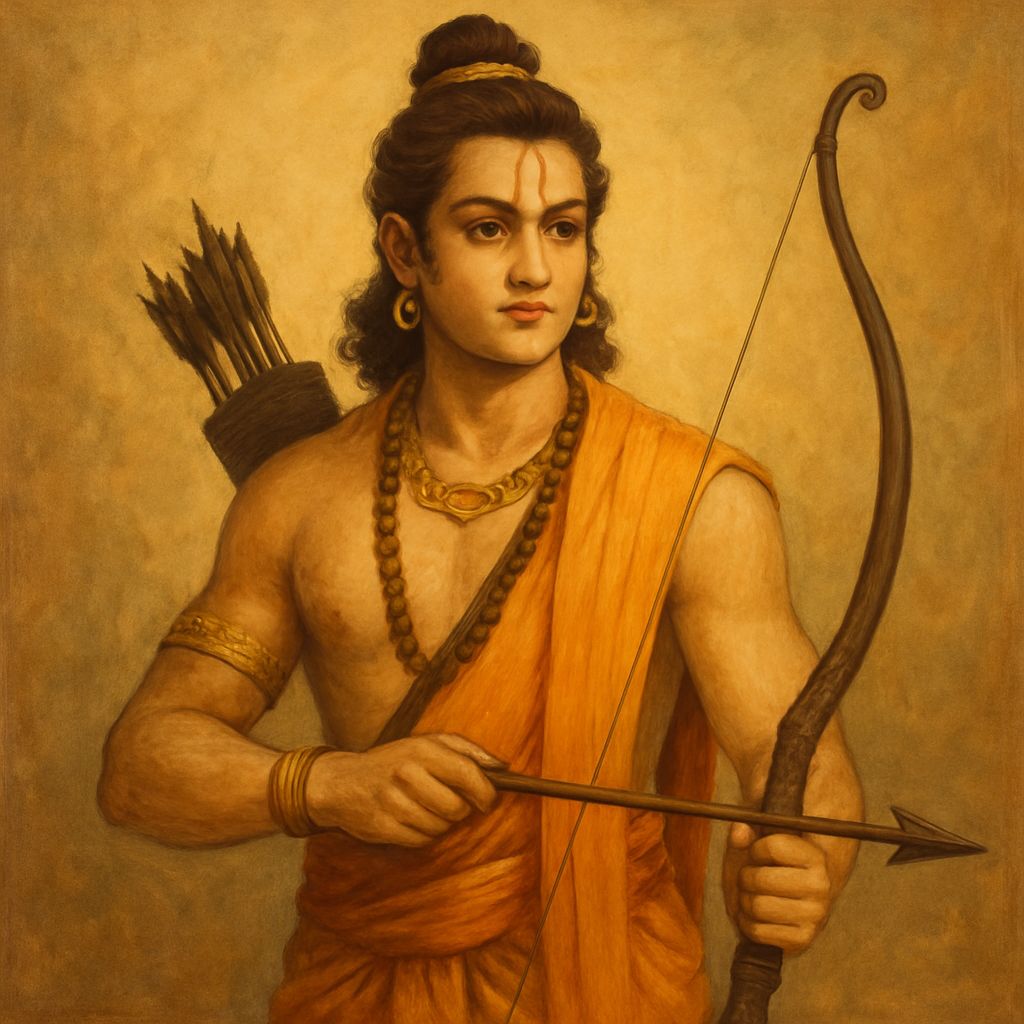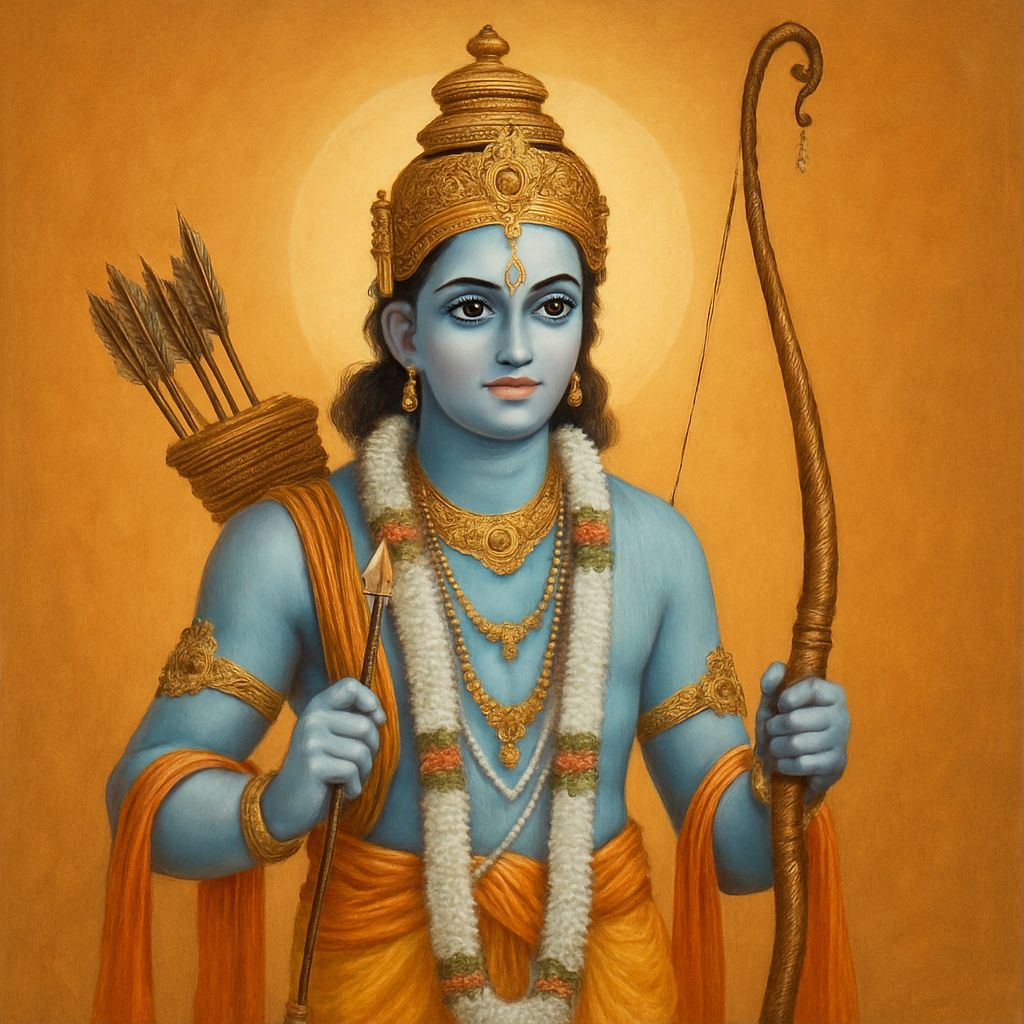Mangala (Mars) — The Fiery Planet of Power, Courage, and Discipline
Introduction — Mangala (Mars) The Red Flame of the Cosmos Among the nine celestial forces known as the Navagrahas, Mangala (Mars) stands as the radiant embodiment of courage, discipline, and willpower. His energy burns bright like the red planet that bears his name — fierce yet purifying, fiery yet purposeful. In the cosmic order, Mangala represents Shakti (divine energy in motion). He governs action, war, vitality, and justice, ensuring that dharma is protected and courage prevails over fear. In every astrological chart, Mars determines the strength of one’s drive, determination, and self-discipline. Devotees view Mangala Deva not merely as a planet, but as a divine commander, a guardian of righteousness, and a symbol of inner strength. To those who walk the spiritual path, his energy teaches that true courage is not in aggression — but in the calm mastery of the self. Mythological Origin of Mangala The birth of Mangala Deva is one of the most powerful and symbolic episodes in Hindu cosmology. According to the Skanda Purana and Matsya Purana, he was born from the fiery energy that emanated from Lord Shiva’s third eye — the seat of divine vision and destruction. When Lord Shiva, immersed in deep meditation,…
Navagrahas – The Nine Celestial Influences in Hindu Astrology
Introduction In Hindu tradition, the Navagrahas (Nine Planets) are celestial deities that influence the lives and destinies of all beings. Each Graha (planet) represents a specific cosmic energy, direction, color, metal, and deity. They are worshipped to balance karma, overcome obstacles, and attain peace and prosperity. The Nine Grahas (Planets) No. Graha Sanskrit Name Nature Color Direction Day Metal Gemstone Vehicle Ruling Deity 1 Sun Surya Fiery, royal, masculine Red / Gold East Sunday Gold / Copper Ruby Chariot with 7 horses Lord Surya 2 Moon Chandra Cool, calm, emotional White / Silver Northwest Monday Silver Pearl Chariot with 10 white horses Goddess Gauri 3 Mars Mangala Energetic, aggressive Red South Tuesday Copper Coral Ram Lord Subramanya 4 Mercury Budha Intelligent, witty Green North Wednesday Bronze Emerald Lion Lord Vishnu 5 Jupiter Guru / Brihaspati Wise, divine Yellow Northeast Thursday Gold Yellow Sapphire Elephant Lord Dakshinamurthy 6 Venus Shukra Artistic, luxurious White Southeast Friday Silver Diamond Horse Goddess Lakshmi 7 Saturn Shani Slow, strict, karmic Blue / Black West Saturday Iron Blue Sapphire Crow Lord Yama 8 Rahu Shadow Planet (North Node) Illusion, ambition Smoky Black Southwest — Lead Gomed (Hessonite) Serpent Goddess Durga 9 Ketu Shadow Planet (South Node)…
Chandra Deva – The Radiant Moon God of Mind, Peace, and Emotion
Introduction Among the celestial beings that adorn the night sky, Chandra Deva, the Moon God, holds a special place in the hearts of devotees. His gentle radiance calms the world, nourishes life, and governs the emotional and mental balance of every being. In Hinduism, Chandra is not merely a planet (graha) but a divine deity of peace, beauty, fertility, and spiritual reflection. This article explores Chandra’s mythological origins, his divine role in astrology, his connection to Soma and Nakshatras, and how modern science complements ancient beliefs about the Moon. Birth and Origin of Chandra Deva According to the Vedic scriptures, Chandra was born from the Samudra Manthan (churning of the ocean of milk). When the gods and demons churned the cosmic ocean to obtain Amrita (nectar of immortality), several divine treasures emerged — including Chandra, the radiant moon. His cool light was said to soothe even the fiercest flames. In some texts, he is also described as the son of Sage Atri and Anasuya, born from their intense penance. Chandra’s beauty and brilliance were unmatched, earning him names like Soma, Indu, and Rajanikara (one who makes the night beautiful). Chandra Deva and His Twenty-Seven Wives – The Nakshatras Chandra married…
The Divine Sun: Myths, Legends, and Symbolism of Surya Deva in Ancient Beliefs
Introduction Legends of Surya Deva : recognised:The first of the nine planets is the Sun. From the moment dawn breaks across the horizon, the Sun becomes a universal symbol of light, life, and divinity. Ancient civilisations, regardless of geography, recognized the Sun not merely as a celestial body but as a godly force — radiant, eternal, and life-giving. In India, this divine entity is worshipped as Surya Deva, the charioteer of light. Similarly, across Greek, Egyptian, and other mythologies, the Sun has been revered as the eye of creation and the soul of the universe.This blog explores the mythological journey of the Sun, diving into legends, rituals, and the timeless reverence humanity has for this celestial power. The Sun in Hindu Mythology – Surya Deva, the Radiant Lord In Hindu cosmology, Surya is one of the most powerful deities, representing light, wisdom, and truth. He rides his golden chariot drawn by seven horses, symbolizing the seven colors of light and the seven days of the week. The charioteer, Aruna, leads him across the sky each day, marking time and sustaining life on Earth. Birth of Surya Deva According to the Rigveda, Surya is the son of Sage Kashyapa and Aditi,…
Karthika Poornima 2025 – Significance, Rituals, and Celebration of the Sacred Full Moon Day
Introduction Karthika Poornima 2025 : Poornima, also known as Tripuri Poornima or Deva Diwali, is one of the most sacred full moon days in the Hindu calendar. It is celebrated on the full moon (Poornima) day of the Karthika Masam — a month deeply revered for its divine energy and spiritual merit This auspicious day marks the celebration of Lord Shiva’s victory over the demon Tripurasura and also holds significance for devotees of Lord Vishnu, who celebrate it as Vaikuntha Poornima. Lighting lamps, performing deepa daanam, fasting, and bathing in sacred rivers are the core rituals of this day. In 2025, Karthika Poornima falls on November 5 (Wednesday). Mythological Significance of Karthika Poornima 2025 Karthika Poornima is associated with multiple divine events in Hindu mythology. The most well-known is the story of Lord Shiva as Tripurantaka. According to the Shiva Purana, three demon brothers—Tarakasura, Kamalaksha, and Vidyunmali—had constructed three flying cities known as Tripura. They caused great destruction in the universe. The gods prayed to Lord Shiva, who destroyed the three cities with a single arrow on Karthika Poornima day, symbolizing the destruction of arrogance, ignorance, and evil. Hence, this day is known as Tripuri Poornima and signifies the victory…
Naagula Chavithi 2025 – Significance, Puja Vidhanam, and Rituals Explained
Introduction Naagula Chavithi, also known as Naga Chaturthi, is a highly revered Hindu festival dedicated to the worship of serpent deities (Naaga Devatas). Celebrated mainly in the southern states of India—especially Andhra Pradesh, Telangana, Karnataka, and Tamil Nadu—this sacred day honors snakes as divine beings who represent fertility, protection, and the life-giving powers of nature. Women observe Naagula Chavithi with deep devotion, praying for the welfare of their children, family health, and prosperity. It is believed that performing Naaga Puja on this day protects one from Sarpa Dosha (serpent curse) and brings divine blessings from Lord Subrahmanya and Lord Shiva. Mythological Significance of Naagula Chavithi According to Hindu mythology, serpents hold a sacred place in the divine hierarchy. They are closely associated with Lord Shiva, who wears a snake around his neck, symbolizing control over fear and death. Lord Vishnu also rests on Adisesha, the thousand-headed serpent, representing eternity and cosmic energy. Another legend says that on this day, Lord Krishna subdued the poisonous serpent Kaliya, who was polluting the Yamuna River. Krishna’s victory over Kaliya symbolizes the triumph of good over evil and the cleansing of life’s impurities. In the Skanda Purana and Agni Purana, Naaga Puja is mentioned…
Yama Dvitiya – The Sacred Festival of Sibling Love and Protection
Introduction Yama Dvitiya 2025 also known as Bhai Dooj, Yamadvitiya, or Bhratri Dwitiya, is a sacred Hindu festival celebrating the eternal bond between brothers and sisters. Observed two days after Diwali, on the Dwitiya Tithi (second lunar day) of Shukla Paksha in Kartika month, this auspicious day is dedicated to Yama (the God of Death) and his sister Yamuna. The festival symbolizes love, protection, and blessings. Sisters pray for their brothers’ long life and prosperity, while brothers promise to protect their sisters from harm. It is often regarded as the final celebration of the Diwali festival, bringing the festive season to a warm and emotional close. The Mythological Story of Yama and Yamuna According to Hindu mythology, Lord Surya (the Sun God) had two children — Yama, the God of Death, and Yamuna, the divine river goddess. Due to Yama’s duties in the underworld (Yamaloka), he rarely visited his sister. One day, Yamuna longed to see her brother and invited him to her home. Overwhelmed with affection, Yama accepted the invitation and visited her on Dwitiya Tithi. She greeted him with a tilak (vermillion mark) on his forehead, performed aarti, and offered delicious sweets. Deeply moved by her love and…
Naraka Chaturdashi – Significance, Story, and Rituals of the Day Before Deepavali
Introduction The festival of Naraka Chaturdashi, also known as Choti Diwali, Kali Chaudas, or Deepavali Chaturdashi, is observed on the fourteenth day (Chaturdashi) of the dark fortnight in the month of Kartika. Falling one day before the grand celebration of Deepavali, it commemorates Lord Krishna’s victory over the demon Narakasura — the triumph of divine light over dark arrogance. It is a day of purification, symbolizing the destruction of all forms of evil and the preparation for the illumination of Diwali night. In South India, Naraka Chaturdashi holds even greater importance than the main Deepavali day, marking the dawn of joy, freedom, and renewal. The Story Behind Naraka Chaturdashi According to the Bhagavata Purana and Vishnu Purana, the demon Narakasura, son of Bhudevi (the Earth Goddess), had grown arrogant after receiving a boon from Lord Brahma that no one except his mother could kill him. His reign brought terror across the three worlds — he captured celestial beings, stole divine treasures, and imprisoned 16,000 women. When his tyranny reached its peak, Lord Krishna, accompanied by his consort Satyabhama (an incarnation of Bhudevi), went to battle against him. Riding Garuda, Krishna fought bravely while Satyabhama struck the final blow, fulfilling the…
The Legend of Narakasura – The Demon King and the True Story Behind Deepavali
Introduction Among the many legends of Deepavali (Diwali), the story of Narakasura, the arrogant demon king, holds a special place in Hindu mythology. His rise and fall reflect a timeless message — that ego, greed, and cruelty always lead to destruction, while truth and virtue triumph in the end. His defeat by Lord Krishna and Satyabhama is celebrated as Naraka Chaturdashi, a day before Deepavali, symbolizing the cleansing of darkness before the festival of light. Who Was Narakasura? Narakasura was a powerful asura (demon) born to Bhudevi (the Earth Goddess) and Varaha (Lord Vishnu’s boar incarnation). Despite being the son of divine beings, Narakasura turned wicked due to the influence of demonic energies and arrogance over his great strength and intellect. He was also called Bhaumasura, meaning “son of the Earth.” Blessed by the gods with immense power, Narakasura was destined to become a mighty ruler. However, he misused his strength to spread terror across the three worlds — Devaloka (heaven), Prithviloka (earth), and Patala (underworld). The Rise of Narakasura Narakasura’s story begins with his devotion to Lord Brahma, the creator. Pleased with his intense penance, Brahma granted him a boon that no one but his mother, Bhudevi, could kill…
Deepavali Story – History, Significance, and Rituals of the Festival of Lights
Introduction Deepavali Story : Deepavali, also known as Diwali, is one of India’s most celebrated festivals. The word “Deepavali” comes from the Sanskrit words Deepa (lamp) and Avali (row), meaning “a row of lamps.” It symbolizes the victory of light over darkness, knowledge over ignorance, and good over evil. Across India and the world, millions of people celebrate Deepavali with oil lamps, sweets, fireworks, and prayers to Goddess Lakshmi for prosperity and happiness. The Mythological Origins of Deepavali Deepavali’s stories differ across regions, each reflecting India’s rich diversity and faith traditions. 1. Lord Rama’s Return to Ayodhya The most popular legend comes from the Ramayana. After 14 years of exile and defeating the demon king Ravana, Lord Rama, along with Sita and Lakshmana, returned to Ayodhya. The people of Ayodhya lit rows of clay lamps (diyas) to celebrate his return and the triumph of dharma. This marks the Deepavali of North India, symbolizing the victory of righteousness. 2. The Slaying of Narakasura by Lord Krishna In South India, Deepavali is linked to Lord Krishna’s victory over the demon Narakasura, who had terrorized gods and humans. Krishna, with his consort Satyabhama, defeated Narakasura, freeing 16,000 imprisoned women. This victory is celebrated…
 Mangala (Mars) — The Fiery Planet of Power, Courage, and Discipline
Mangala (Mars) — The Fiery Planet of Power, Courage, and Discipline Navagrahas – The Nine Celestial Influences in Hindu Astrology
Navagrahas – The Nine Celestial Influences in Hindu Astrology Chandra Deva – The Radiant Moon God of Mind, Peace, and Emotion
Chandra Deva – The Radiant Moon God of Mind, Peace, and Emotion The Divine Sun: Myths, Legends, and Symbolism of Surya Deva in Ancient Beliefs
The Divine Sun: Myths, Legends, and Symbolism of Surya Deva in Ancient Beliefs Karthika Poornima 2025 – Significance, Rituals, and Celebration of the Sacred Full Moon Day
Karthika Poornima 2025 – Significance, Rituals, and Celebration of the Sacred Full Moon Day Naagula Chavithi 2025 – Significance, Puja Vidhanam, and Rituals Explained
Naagula Chavithi 2025 – Significance, Puja Vidhanam, and Rituals Explained Yama Dvitiya – The Sacred Festival of Sibling Love and Protection
Yama Dvitiya – The Sacred Festival of Sibling Love and Protection Naraka Chaturdashi – Significance, Story, and Rituals of the Day Before Deepavali
Naraka Chaturdashi – Significance, Story, and Rituals of the Day Before Deepavali The Legend of Narakasura – The Demon King and the True Story Behind Deepavali
The Legend of Narakasura – The Demon King and the True Story Behind Deepavali Deepavali Story – History, Significance, and Rituals of the Festival of Lights
Deepavali Story – History, Significance, and Rituals of the Festival of Lights
